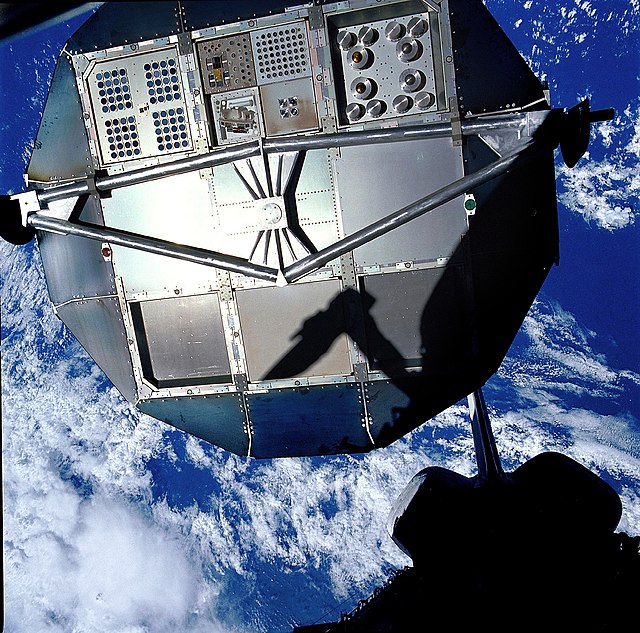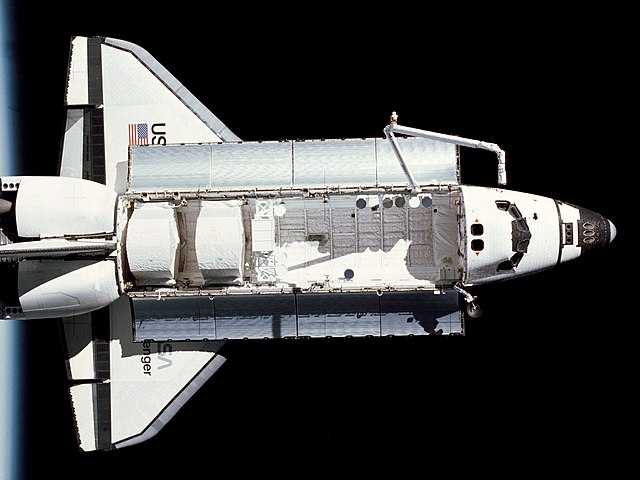Long Duration Exposure Facility
NASA's Long Duration Exposure Facility, or LDEF, was a cylindrical facility designed to provide long-term experimental data on the outer space environment and its effects on space systems, materials, operations and selected spores' survival. It was placed in low Earth orbit by Space Shuttle Challenger in April 1984. The original plan called for the LDEF to be retrieved in March 1985, but after a series of delays it was eventually returned to Earth by Columbia in January 1990.
LDEF, shortly before deployment, flies on the RMS arm of Space Shuttle Challenger over Baja California.
LDEF after retrieval.
Columbia arrives at Kennedy Space Center with LDEF still in its payload bay.
LDEF is removed from Columbia's payload bay
Space Shuttle Challenger (OV-099) was a Space Shuttle orbiter manufactured by Rockwell International and operated by NASA. Named after the commanding ship of a nineteenth-century scientific expedition that traveled the world, Challenger was the second Space Shuttle orbiter to fly into space after Columbia, and launched on its maiden flight in April 1983. It was destroyed in January 1986 soon after launch in a disaster that killed all seven crewmembers aboard.
Challenger in orbit in 1983, during STS-7
Challenger being prepared in 1985 for its penultimate flight, STS-61-A
Challenger atop a Crawler-transporter, en route to the launch site for its final flight, STS-51-L
Challenger being transported by Shuttle Carrier Aircraft 905, shortly before being delivered in 1982








